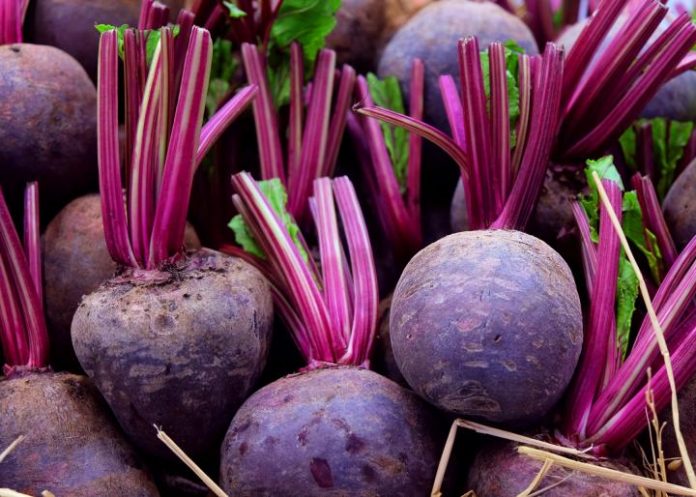by Alessandra Ressa
One ingredient that you will always find in my kitchen when in season is beetroot. For its color -red being my favorite- and for its ductile characteristics, able to transform even the dullest of dishes into something intriguing and original. This root vegetable really does wonders and at a very affordable price.
Also known as red beet, table beet, garden beet, or just beet, it can be found fresh in most organic vegetable stands and markets in Trieste by its Italian name, erbette, barbabietole or rape rosse. Even Trieste’s dialect has its version of the word, which is erbeta or arbeta.
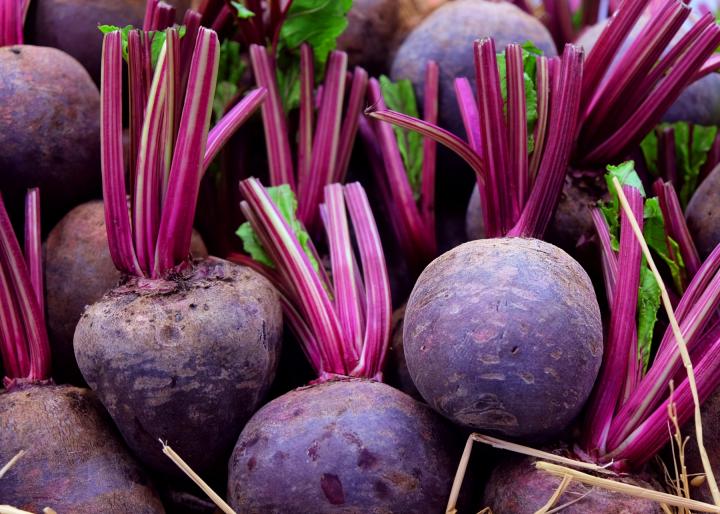
You can make just about anything using beetroot – from desserts to salads to cocktails and juices. It also contains an incredible amount of healthy essential nutrients that have been scientifically proven to cure cardiovascular diseases.
Beetroot is a great source of fiber, folate (vitamin B9), magnesium, potassium, iron, and vitamin C. As if that was not enough, it has been known and widely used since the Neolithic!
Incredibly, there appears to be no traditional local recipe in Trieste featuring this red wonder. I have therefore invented my own beetroot traditional Triestino dish: a fusion of Austrian and Istrian flavors. The recipe combines the mountains with the Adriatic sea and the Mediterranean in what I have called Barcolini Rossi (Red Barcolini).
Even more incredibly, my kids, who have a chronic repulsion for red beet (but of course most of the time don’t know it’s there) love this recipe which has become now quite popular during our Christmas holidays.
It is a main course with carbohydrates and fish, so not suitable for gluten intolerants, vegetarians or people on strict no-carb diets. But you can always modify the ingredients (eggplants instead of fish, gluten free flour) although that does not apply for people on a diet…
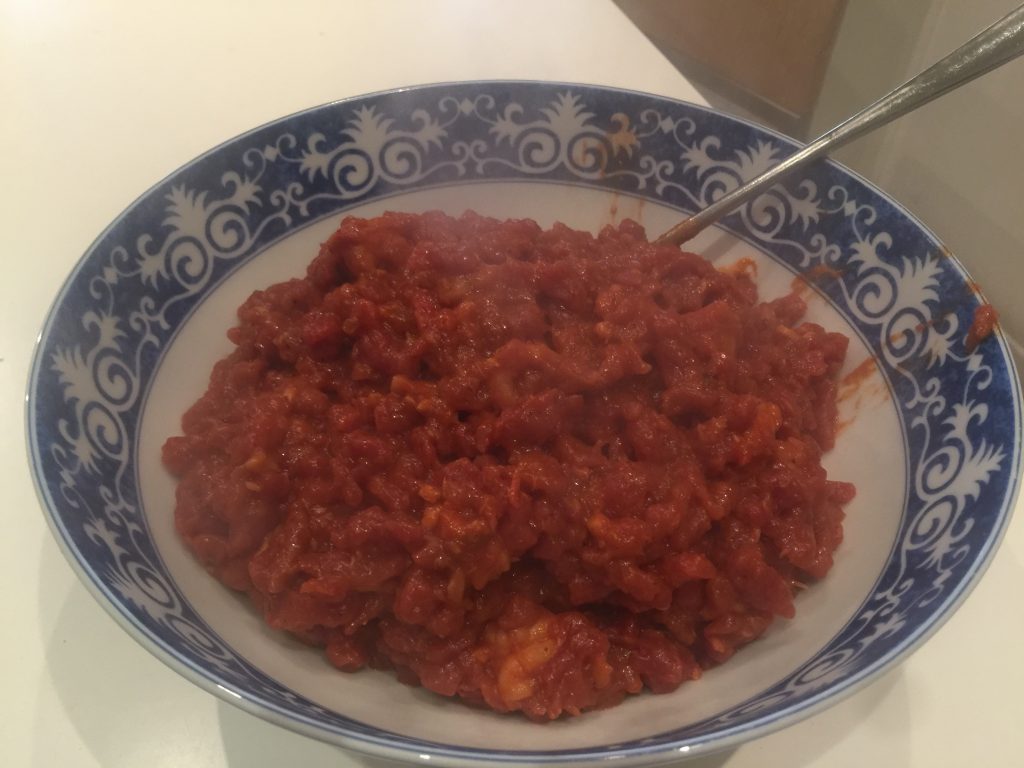
For 4 people you will need approx. 2 lb. beetroot (ideally fresh with leaves, but you can find the pre-packaged version any time of year), flour, 4 fresh ripe tomatoes, fresh prawns (10 to 12), fresh scampi, one or two slices of monkfish, 1 clove of garlic, salt, pepper, fresh or frozen basil, oregano, olive oil (best if from San Dorligo della Valle or Istria which are bitter and strong like Trieste itself).
For the sauce: peel and chop the tomatoes. Grate a clove of garlic in a pan with abundant olive oil and heat up (don’t let the garlic get brown). Add the chopped tomato and let simmer for a few minutes until it softens into a creamy sauce.
Season with basil, oregano, salt and pepper. Add the peeled prawns (remember to remove the digestive track, which looks like a black vein on the back), then add the monkfish cut into cubes and the whole scampi including shell (cut the shell for easier peeling). Add salt and pepper.
Let it simmer until the seafood is cooked, be ready to add some beetroot cooking water (see below) if the sauce dries up.
And now, for the hard part of the recipe, the Barcolini. You’ll need a spaetzle special grater. Spaetzle are special gnocchi from the area of Trentino bordering with Austria. You can buy this grater online for as little as 6 euros.

Peel the beetroots (they will stain your hands so you may want to use gloves), then boil them in abundant water for about 1 hour. Drain and save the dark red cooking water. It will come in handy for future sauces, pink risotto, pasta and drinks. Personally, I like to save it in this special bottle and tease my kids and guests as it looks like blood (works wonders on Halloween).
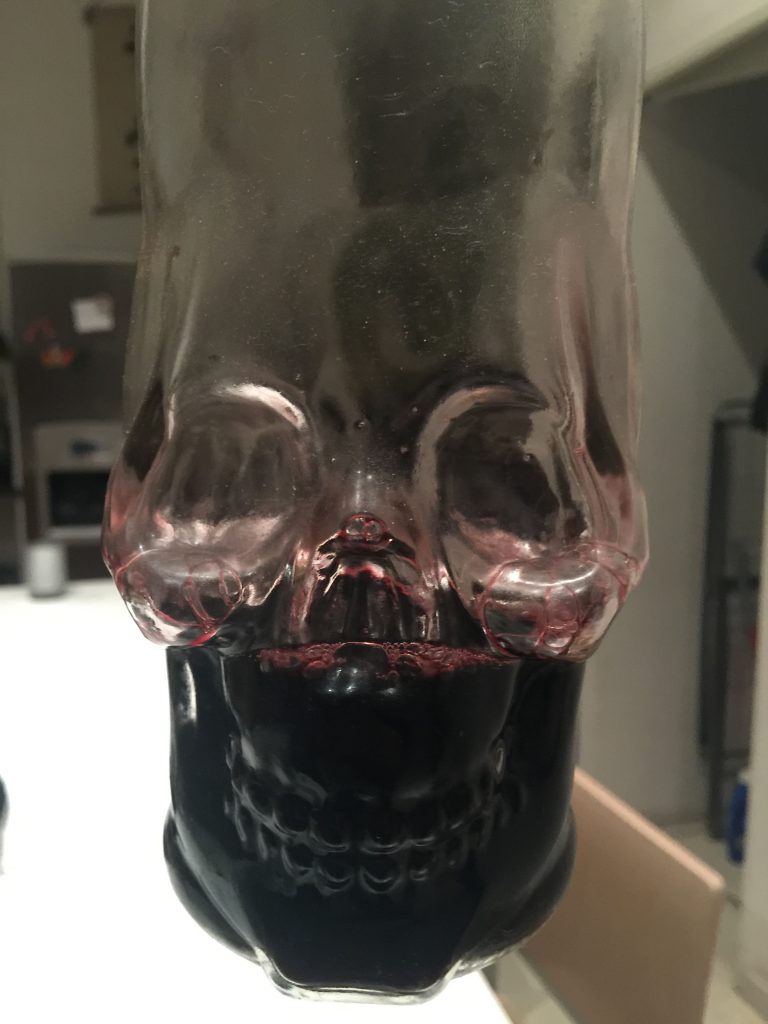
Mash the boiled beetroot then mix it with flour and knead in a bowl with a wooden spoon. The dough needs to be sticky and moist but not too soft. If too hard, add some beetroot cooking water. Little by little, add the grated the dough to abundant boiling water (put enough salt in the water as if you were cooking pasta). Don’t worry if the Barcolini will begin to float and you are still half way through the grating process.
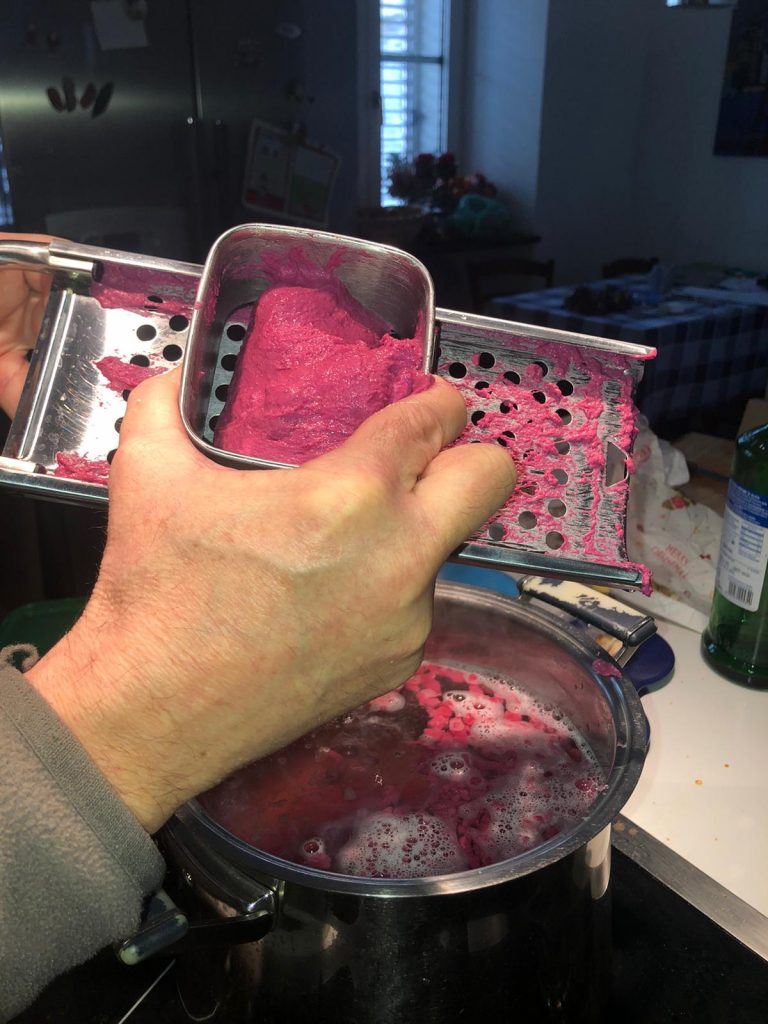
Make sure you have someone to give you a hand with the grating, as it’s very hard work. When you finish, wait until all the Barcolini float to the surface, stir a couple of times and be ready to drain them in the strainer.
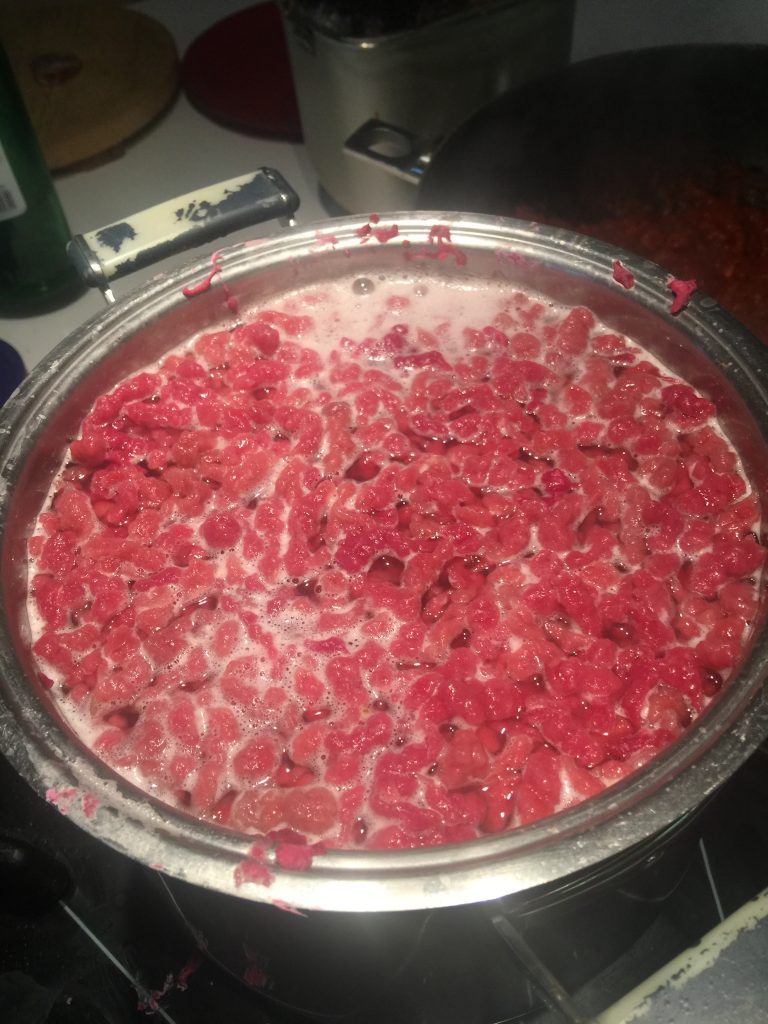
Remove all cooking water and mix your Barcolini rossi with the red sauce. Serve hot. It will be a success. The red color of this dish matches well with the winter holidays, but of course any day is good for beetroot.
And now for some facts about this wonderful root. Today, beetroot is grown in many countries worldwide, is regularly consumed as part of the normal diet, and commonly used in manufacturing as a food coloring agent known as E162.
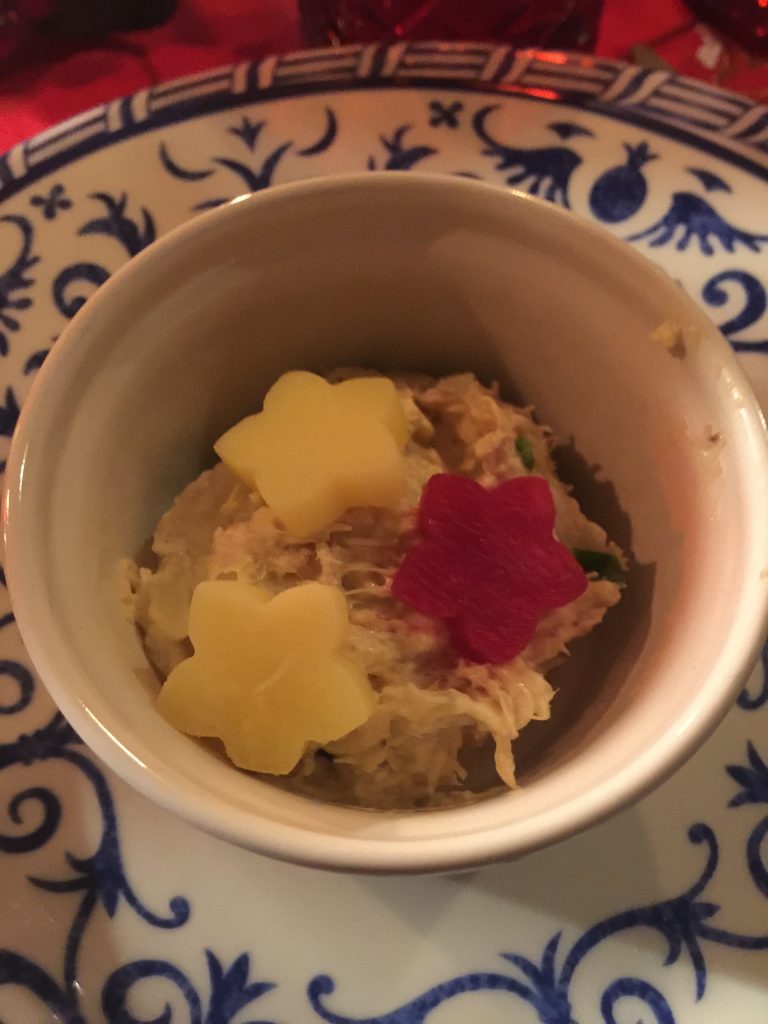
The oldest archeological proofs we used beetroot in ancient times were found at the Neolithic site of Aartswoud in the Netherlands, but also in Saqqara pyramid at Thebes, Egypt, which dates back to the Third Dynasty (third millennium BC).
There are Assyrian texts that say beetroots were growing in the Hanging Gardens of Babylon in the 800 BC. That is of course a bit problematic to prove because we still don’t know if Hanging Gardens ever existed…. but we can be positive that Mesopotamia knew about beetroots at that time.
Ancient Greeks cultivated beetroot around 300 BC. They didn’t use the roots of the plant and only ate the leaves. They nevertheless respected the root and offered it to the sun god Apollo in the temple of Delphi. They also considered it to be worth its weight in silver.
Hippocrates used leaves of beetroot for binding and dressing wounds while Talmud, written in 4th and 5th century, advises eating beetroot, among other things, for longer life.
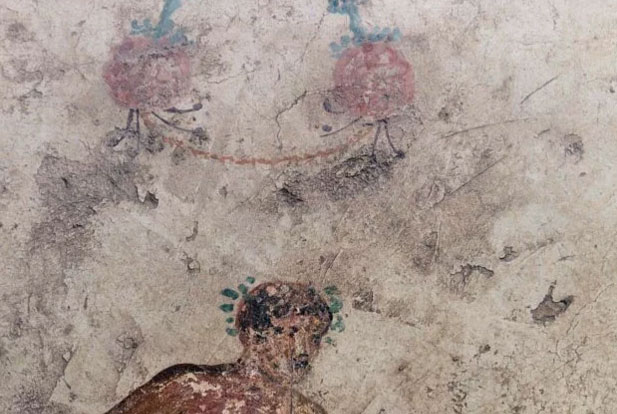
Ancient Romans also ate roots but mainly for medicinal purposes. They used it as a laxative or to cure fever. There were however some wise Romans that used it as food: Apicius, famous Roman gourmet, wrote a book called “The Art of Cooking” and in it gave recipes with beetroots like broths and salads with mustard, oil, and vinegar.
All these uses were of an old variant of beetroot: long and thin, like a carrot. Modern one, as we know it today, appeared in 16th or 17th century Europe. It needed a few hundred years more to become popular in Central and Eastern Europe where new cuisines with beetroot started appearing (borscht for example). In Victorian times, beetroot was used to bring color to an otherwise colorless diet and as a sweet ingredient in desserts.

Industrialization allowed for easier preparation and conservation of vegetables, so beetroot became more available. After the Second World War, because of the rations in some places, the most available vegetable was pickled beetroot in jars. Today, the most common variant of beetroot is round and deep red, but they can also be yellow, white, and even red and white.


























